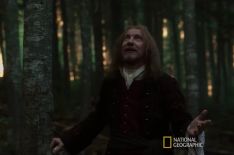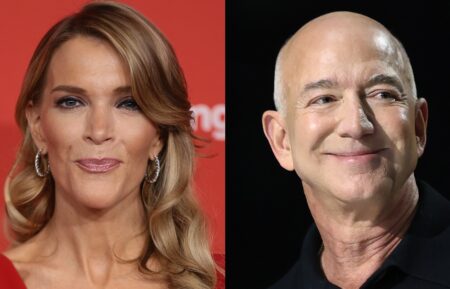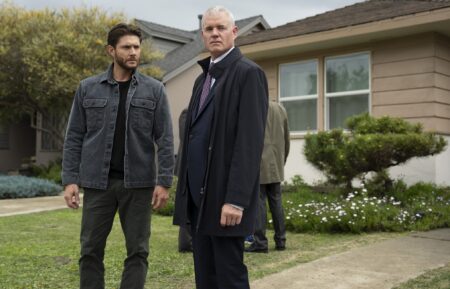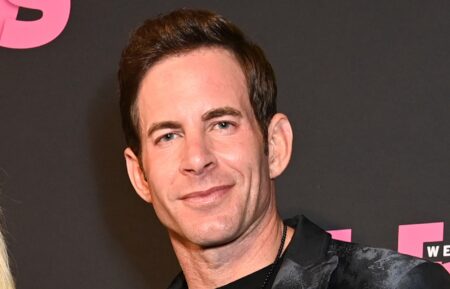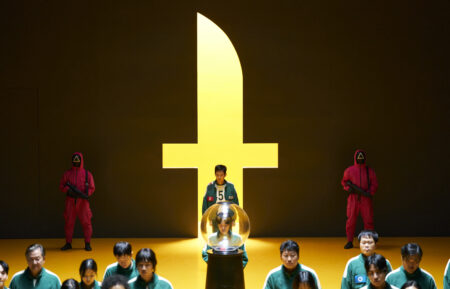‘Barkskins’ Boss Reveals Why He Had to ‘Revise’ Mathilde After Casting Marcia Gay Harden
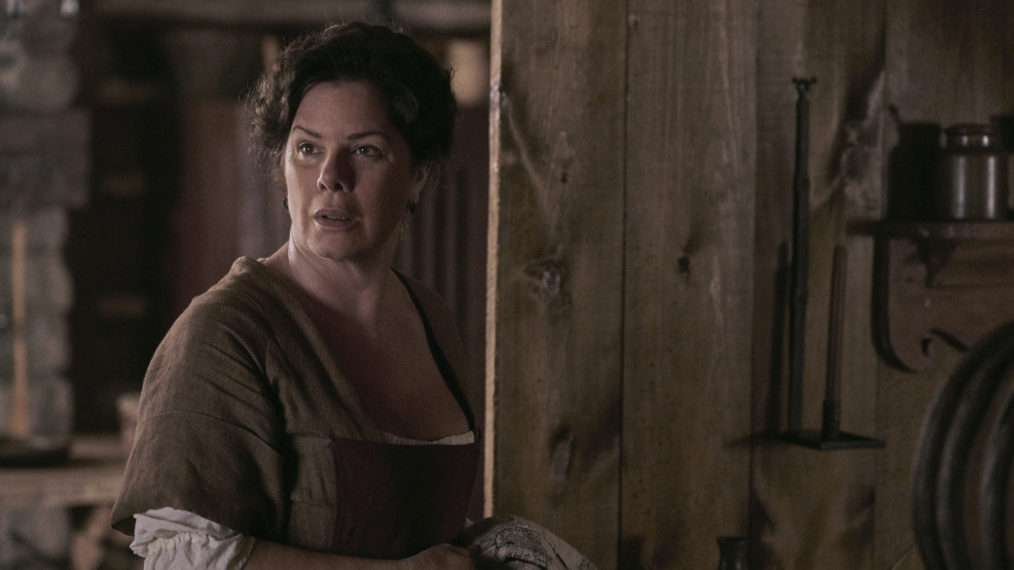
Q&A
If you like a little mystery mixed in with your period dramas, you’ll want to tune in to National Geographic’s Barkskins on Memorial Day.
Based on Annie Proulx’s best-selling novel, the series from Elwood Reid takes a close look at the mysterious massacre of settlers in 1690s New France, and everyone — the English, the Hudson’s Bay Company, and a band of Kanien’kehá:ka (Iroquois) possibly working with the English to rid the territory of the French — is a suspect. Settle in for brutal hardships, tangled loyalties, secrets, and much, much more, over eight episodes airing over four weeks.
“I just want people to have a good ride. I want it to be fun,” Reid told TV Insider. “I wanted to tell a ripping good story about, at least in my reading, the founding of North America. It was founded by dreamers and scoundrels, and of course there was a large religious context.”
Here, the showrunner takes us inside making the show and previews some of its major players.
Visually, this series is just stunning. The sets, the clothing … What was your plan for all of that going in?
Elwood Reid: One of the things I think you’re sensing in there is an authenticity in the way that the show looks at a grandeur level, and what I did was I hired two very important people. I hired a wardrobe costume designer named Anna Terrazas, who I’d worked with on The Bridge before. … I have a shorthand with her. I was like, “You build me that character,” and then she brainstorms and comes up with all these cool ideas of their clothing and then even in the writing process, I begin to incorporate what she brings to me visually.
I must say all the characters, including Trepagny, were brought to life by her as much as what was on the page. She hand-built everything. She came to me early on, “I don’t want this to look like other costume dramas,” which was a mantra I took to every aspect of the TV show. I asked, “Why does every costume drama look the same?” She said, “Well, mostly because they buy from the same costume houses. … So you’re seeing recycled clothes and the clothes that are built on pre-existing wardrobe costume.”
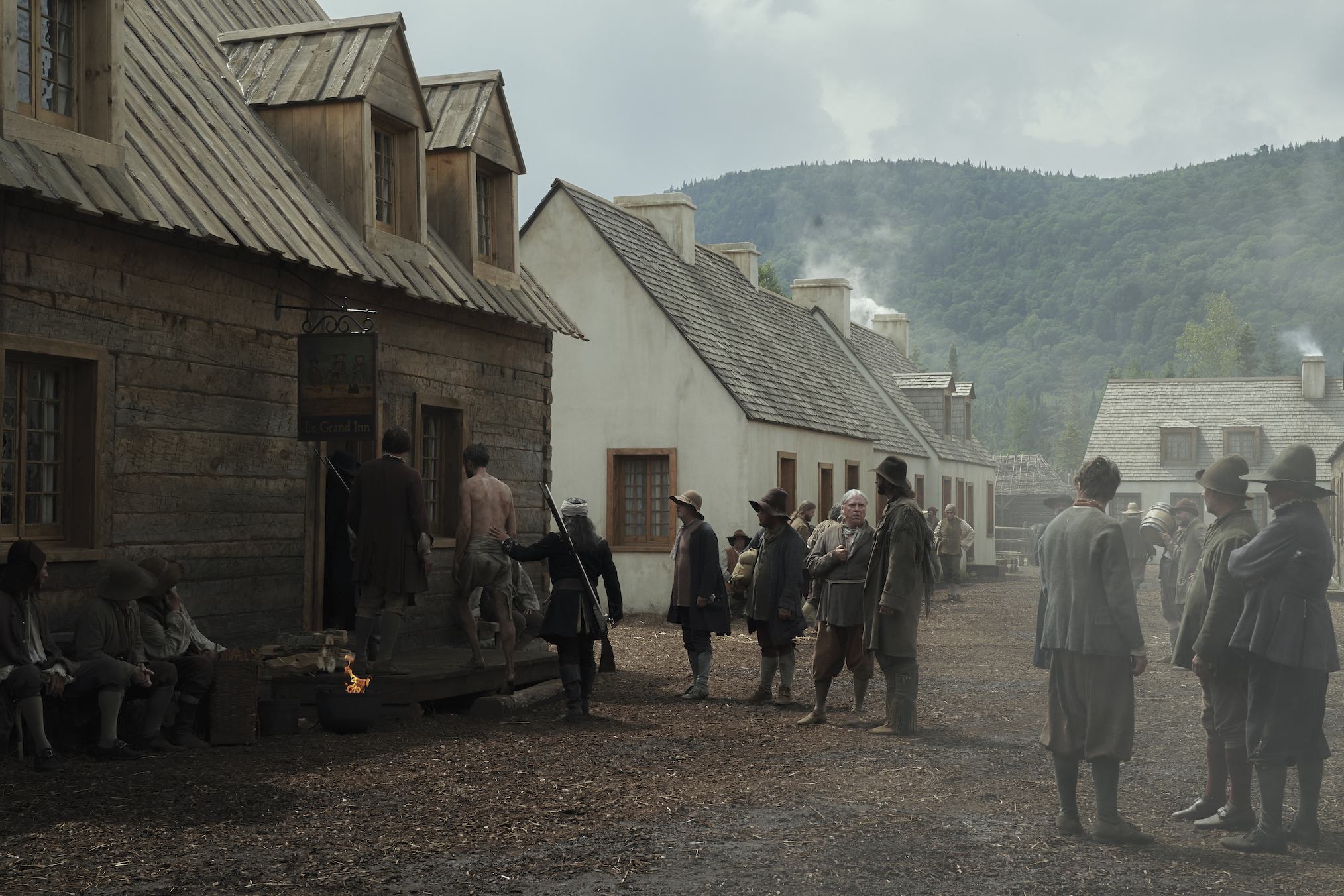
(National Geographic/Peter H. Stranks)
Then when it came time to the set build, the same thing. I interviewed a bunch of production designers. [After hearing about using computers], I met Isabelle Guay, who is my production designer, and she was like, “No, I want to do it the way they would have done it. I want to use real logs. I want to hand-hew things. I want to build the actual village.” I thought she was nuts when she told me this, but she just had this confidence and this glamour about her, [so] I said, “I trust you.”
This is based on a 700-page book, but you’re only focusing on the first 100 pages.
There was something about [them] that really felt vital to me and was interesting because it was talking about the forming of civilization as we were watching our civilization unravel a little bit.
I’m also a novelist. I also know that when you write, the first chunk of a book, the first episode of a TV series, the first 50 pages of something, that’s your passion, that’s your thesis statement. I had some conversations with Annie, and I could tell there was something in those first 100 pages that she really thought about and invested in those characters.
So like a vampire, I wanted to suck that blood. I just wanted to lay into that stuff. And I had to invent quite a bit of story and characters to bring those other characters to life. I just knew right away that’s where I should be.
Is there anything from your work on procedurals that you were able to take and adapt for the 1690s and this mystery?
A little bit. I had come to the procedures from being a novelist. I was afraid of plot and got this lesson in plot from working on Hawaii Five-0, that it’s why people watch TV. When they’re presented with a mystery, the next thing is what happened and why did it happen?
Not a lot of period dramas use that. They seem to unspool at a leisurely pace and with endless amounts of patience from the audience. I just think we live in a culture right now that really doesn’t reward that. I wanted to inject a little bit of that, and I certainly did learn from all my time working in procedurals — we’d call it the body drop. Drop a body and then your story takes off. I was very conscious of doing that in this show.
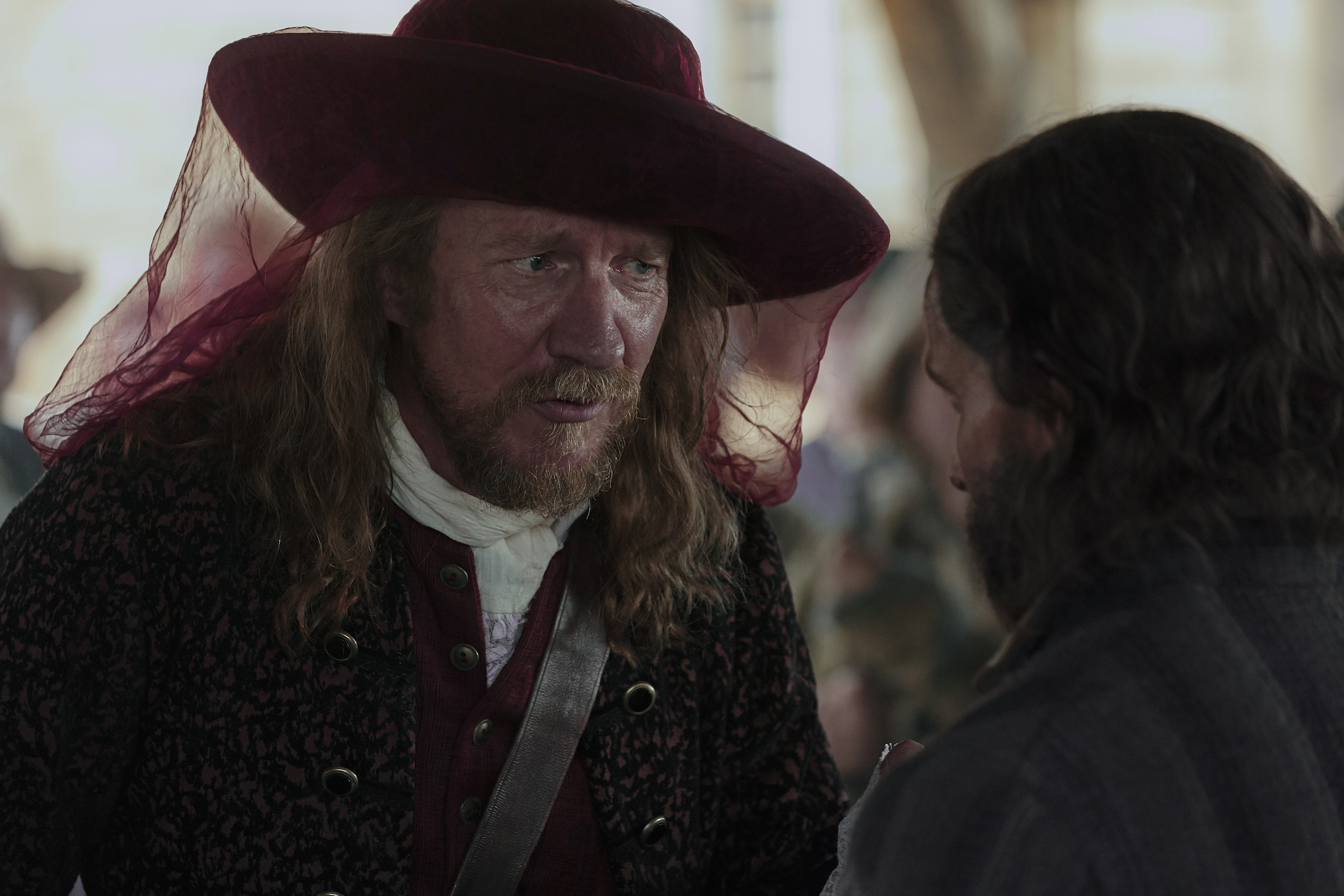
(National Geographic/Peter H. Stranks)
I did not want to make a historical drama that seemed locked in amber. I like them as much as the next person, but more the Paul Thomas Anderson approach. When he does period pieces, they bring a vital plot-driven sensibility to things that really elevates that work.
Let’s talk about the power players. Who’s in the best position to accomplish his or her goals at the beginning of the series and how might that change?
At the beginning, you think Melissande, who’s one of the Filles du Roi, who very, very clearly states from the minute you meet her what she wants. She’s not marrying for love, she’s marrying for land and she’s marrying the guy with the biggest house. She does accomplish that in very quick order, but then her plan is undone … and then she’s not so sure what she has up there when she realizes she’s living in the wilderness, surrounded by hostile tribes, and there’s nobody else up there.
Trepagny doesn’t play by the rules. He’s after this sort of ethereal vision that he has in his head, and [then] a very difficult blow will cause him, as the series goes on, to redirect his vision for something else.
I always start with this premise on all shows that I do: Everybody has to have a secret and everybody has to want something. And then the drama exists when there’s somebody that doesn’t play by those rules. In this show, Sel’s that person. Sel doesn’t have a secret. Sel really only wants land and wants to stand by his word and do good work. He’s this guy that’s this quiet center of the whole show. Duquet, his counterpart, is this sneaky, conniving guy who doesn’t want to work, wants to steal land, and he finds a mentor in Cooke. That’s the way I built the drama of the show.
Speaking of secrets, Mathilde is the one who knows everyone’s.
It’s funny. I had originally planned Mathilde to be this character that nobody saw coming. She was this innkeeper and she was there and she was in the center and a little bit of a spy and she worked for Cooke and Lafarge and she knew everybody and she was all about the money.
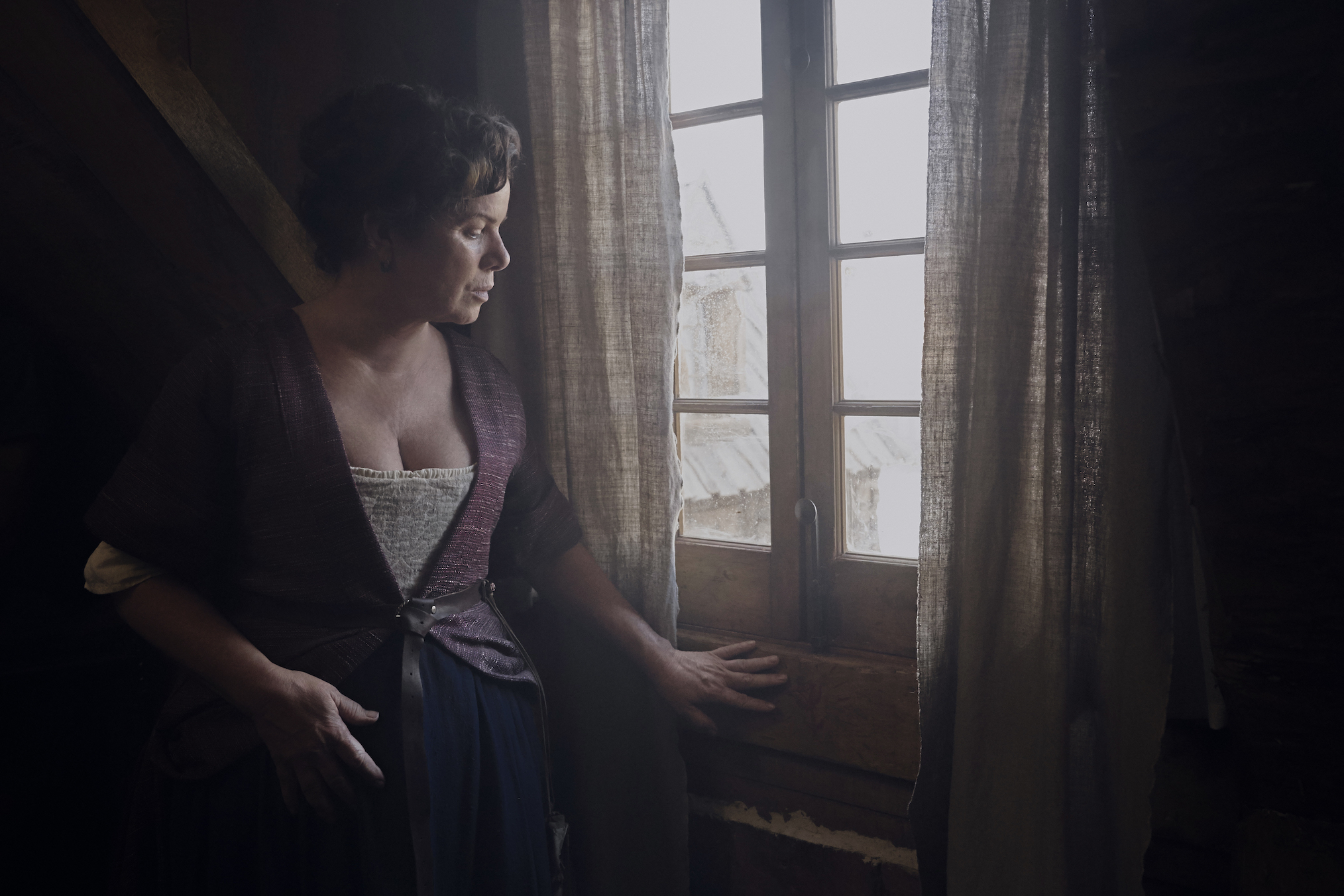
(National Geographic/Peter H. Stranks)
But then when I cast Marcia Gay Harden, I knew there was no hiding Mathilde. That forced me to rethink her character. When I cast her, I then revised the character to be this person who sits at the center of everything. We don’t quite know what her ultimate endgame is, but … she’s a woman who realizes her useless husband was holding her back in some ways. Mathilde’s story is just beginning to bloom.
Barkskins, Series Premiere, Monday, May 25, 9/8c, National Geographic
From TV Guide Magazine
How 'Countdown' Recruited Jensen Ackles to Go Full 'Die Hard'
Countdown boss Derek Haas talks creating the character around Ackles, and the cast teases the “Avengers”-like team of the crime thriller. Read the story now on TV Insider.

